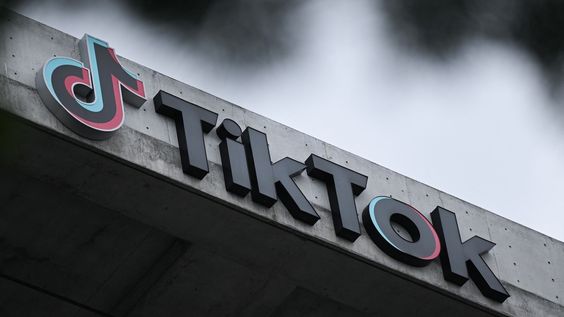Google and Facebook ,digital marketing landscape has evolved dramatically over the past few years. Gone are the days when marketers could rely solely on Google and Facebook to reach their target audiences and achieve their goals. In 2024, the advertising ecosystem is more intricate and multifaceted, requiring a sophisticated approach to capture attention and drive conversions. This comprehensive guide will explore the tools and strategies that modern marketers need to thrive in this dynamic environment.
Expanding Your Reach beyond Google and Facebook

The Importance of Diversification
While Google and Facebook continue to dominate the digital advertising space, focusing exclusively on these platforms can limit your reach and effectiveness. Diversification is key to maximizing your advertising efforts. By exploring additional platforms and channels, you can tap into new audiences and improve your overall campaign performance.
diversification in digital marketing is not merely a strategy but a necessity in 2024. It offers resilience against uncertainties, expands reach into new markets, optimizes campaign performance, and ensures brands remain relevant and competitive in an increasingly dynamic digital ecosystem.
Leveraging Snapchat for Enhanced Engagement
Snapchat has emerged as a powerful platform for engaging younger audiences. Its unique features, such as Stories and augmented reality (AR) lenses, provide creative opportunities to capture attention and drive engagement. Brands that have experimented with Snapchat often find that it outperforms other platforms in terms of user interaction and brand recall.
Snapchat’s dynamic and interactive features make it a potent platform for brands aiming to engage younger audiences effectively. By leveraging these tools and strategies, marketers can create compelling campaigns that drive engagement, increase brand awareness, and foster deeper connections with Snapchat users.
Exploring the Potential of TikTok
TikTok has rapidly become a global sensation, particularly among Gen Z and millennial users. Its short-form video content format encourages creativity and viral sharing, making it an ideal platform for brands looking to create buzz and connect with younger demographics. By leveraging TikTok’s advertising options, such as In-Feed Ads, Branded Hashtag Challenges, and Branded Effects, marketers can craft compelling campaigns that resonate with users.
TikTok’s rapid growth and engagement metrics present a valuable opportunity for brands to connect authentically with younger demographics. By embracing TikTok’s creative features, leveraging influencer partnerships, and staying attuned to platform trends, marketers can effectively harness the platform’s potential to drive brand awareness, engagement, and conversions.
Utilizing LinkedIn for B2B Marketing
For B2B marketers, LinkedIn remains an invaluable platform. It offers targeted advertising options that allow businesses to reach decision-makers and professionals in specific industries. Sponsored Content, InMail, and Display Ads on LinkedIn can help build brand awareness, generate leads, and drive conversions in the B2B space.
LinkedIn’s unique positioning as a professional networking platform makes it indispensable for B2B marketers looking to establish relationships, generate leads, and drive business growth. By utilizing its targeted advertising options, content capabilities, and analytics tools effectively, marketers can maximize their impact and achieve their B2B marketing objectives on LinkedIn.
Programmatic Media Buying: A Strategic Advantage
Programmatic media buying has revolutionized the way advertisers purchase ad inventory. By using a Demand-Side Platform (DSP), marketers can access a wide range of ad placements across various websites and apps. This automated process not only saves time but also optimizes ad delivery to reach the most relevant audiences.
Programmatic media buying empowers marketers with tools and technologies to streamline operations, enhance targeting precision, optimize performance, and drive measurable results in digital advertising. By embracing programmatic strategies, marketers can gain a competitive advantage in today’s fast-paced and data-driven advertising landscape.
The Role of DSPs and DMPs
An integrated DSP with Data Management Platform (DMP) capabilities offers a comprehensive solution for audience targeting and campaign optimization. DMPs collect and analyze data from multiple sources, enabling marketers to build detailed audience profiles and target them with precision. By leveraging cutting-edge optimization algorithms, DSPs can enhance ad performance and maximize ROI.
DSPs and DMPs play integral roles in programmatic advertising by enabling automated ad buying, sophisticated audience targeting, and data-driven campaign optimization. Their collaboration empowers marketers to execute targeted, efficient, and impactful digital advertising strategies in today’s competitive landscape.
Ad and SDK Networks: Expanding Reach and Performance
Ad and SDK networks connect advertisers with a vast array of apps and mobile websites. These networks facilitate the placement of ads in relevant contexts, ensuring that they reach the right audiences at the right time. The Software Developer Kit (SDK) provides tools for tracking and enhancing campaign performance, including analytics, re-engagement features, and more.
Ad Networks
Ad networks connect advertisers with a broad inventory of websites and mobile apps where they can place ads. Key features and benefits include:
- Inventory Access: Ad networks aggregate ad space from a multitude of publishers across various industries and verticals. This extensive inventory allows advertisers to reach diverse audiences and target specific demographics or interests.
- Targeting Capabilities: Ad networks offer targeting options based on demographics, geolocation, browsing behavior, and contextual relevance. This targeting helps advertisers deliver relevant ads to users who are most likely to engage with their content.
- Campaign Management: Ad networks provide tools for campaign setup, management, and optimization. Advertisers can monitor performance metrics such as impressions, clicks, and conversions, and adjust bidding strategies to maximize ROI.
- Performance Tracking: Ad networks offer analytics and reporting tools that provide insights into campaign performance. Advertisers can track key metrics, analyze trends, and make data-driven decisions to optimize future campaigns.
- Cost Efficiency: Ad networks often operate on a cost-per-click (CPC) or cost-per-impression (CPM) pricing model, allowing advertisers to control ad spend and optimize budget allocation based on performance outcomes.
2. SDK Networks
SDK networks focus on integrating advertisers’ ads into mobile apps through Software Development Kits (SDKs). Key features and benefits include:
- Integration with Mobile Apps: SDK networks facilitate the seamless integration of ads within mobile applications. This integration supports various ad formats, including banners, interstitials, native ads, and rewarded videos, enhancing user engagement and monetization opportunities for app developers.
- Monetization for App Developers: SDK networks provide app developers with opportunities to monetize their apps through advertising revenue. Developers can integrate SDKs to display ads and earn revenue based on ad impressions, clicks, or user actions such as app installs or purchases.
- Ad Performance Optimization: SDK networks offer tools for ad performance tracking and optimization. Advertisers can analyze metrics such as ad clicks, views, and user interactions to refine targeting strategies and improve ad effectiveness within mobile apps.
- User Experience Considerations: SDK networks prioritize user experience by offering non-intrusive ad formats and placements that align with app content and enhance user engagement. This approach helps maintain app usability and encourages positive interactions with ads.
- Global Reach and Scalability: SDK networks operate globally, allowing advertisers to reach a diverse audience of mobile users across different regions and markets. This global reach enhances campaign scalability and enables advertisers to expand their brand presence effectively.
The Power of Affiliate Networks

Affiliate marketing through affiliate networks is a potent strategy for brands aiming to expand reach, drive sales, and increase brand awareness. Here’s a detailed exploration of the benefits and components that make affiliate networks effective:
1. Partnership with Diverse Publishers
Affiliate networks act as intermediaries between advertisers (brands) and publishers (affiliates), facilitating partnerships that leverage publishers’ audiences for promotional purposes. Key aspects include:
- Diverse Publisher Base: Affiliate networks encompass a wide range of publishers, including bloggers, influencers, content creators, and niche websites. This diversity allows brands to access varied audience demographics and interests, enhancing targeting precision.
- Scalable Reach: By partnering with numerous publishers across different platforms (websites, social media, email newsletters, etc.), brands can significantly expand their reach and visibility among relevant audiences.
2. Performance-Based Model
Affiliate marketing operates on a performance-based model where advertisers pay commissions to affiliates only when desired actions occur, such as clicks, leads, sales, or other predefined conversions. This model offers several advantages:
- Cost Efficiency: Advertisers mitigate financial risk since payments are made upon achieving measurable results. This aligns marketing spend with actual outcomes and ensures a positive ROI.
- Incentivized Publishers: Affiliates are motivated to drive quality traffic and conversions due to the commission-based compensation structure. This incentivization fosters active promotion and advocacy for the advertiser’s products or services.
3. Tracking and Attribution
Affiliate networks provide robust tracking and attribution tools to monitor the performance of affiliate campaigns accurately. Key functionalities include:
- Tracking Pixels and Cookies: Tracking mechanisms like pixels and cookies enable affiliates to track user interactions with affiliate links and attribute conversions to specific publishers. This transparency ensures fair compensation based on actual contribution.
- Real-Time Reporting: Real-time reporting dashboards offer visibility into campaign metrics such as clicks, conversions, conversion rates, and revenue generated. This data empowers advertisers to optimize campaigns promptly and allocate resources effectively.
4. Flexibility and Control
Advertisers retain control over campaign parameters within affiliate networks, including commission rates, promotional guidelines, and affiliate selection criteria. This flexibility allows brands to tailor affiliate partnerships to align with brand values and marketing objectives.
5. Enhanced Brand Exposure and Authority
Affiliate marketing contributes to enhanced brand exposure and authority through:
- Third-Party Endorsements: Recommendations from trusted affiliates serve as valuable endorsements that resonate with their audiences, fostering trust and credibility for the brand.
- Content Variety: Affiliates create diverse content types (reviews, tutorials, comparisons, etc.) that showcase products or services in authentic, engaging ways. This variety enhances brand visibility across different platforms and content formats.
6. Continuous Optimization and Growth
Affiliate networks support continuous optimization strategies to maximize campaign effectiveness:
- Performance Analysis: Regular analysis of affiliate performance metrics informs strategic decisions, such as optimizing commission structures, refining targeting strategies, or expanding partnerships with top-performing affiliates.
- Relationship Building: Nurturing relationships with high-performing affiliates and providing them with resources and support fosters long-term collaboration and mutual growth.
Affiliate networks empower brands to leverage the influence and reach of publishers to achieve marketing objectives effectively. By fostering partnerships based on mutual benefit and aligning incentives with performance, affiliate marketing emerges as a dynamic strategy for driving measurable results and sustainable growth in the digital landscape.
The Power of Affiliate Networks
Affiliate marketing remains a robust strategy for driving conversions. Affiliate networks enable advertisers to partner with influencers, content creators, bloggers, and freelancers who promote their products or services. This approach leverages the credibility and reach of affiliates to generate sales and increase brand awareness.
Beyond Google and Facebook: The Modern Marketer’s Toolkit for 2024 The digital marketing landscape has evolved dramatically over the past few years. Gone are the days when marketers could rely solely on Google and Facebook to reach their target audiences and achieve their goals. In 2024, the advertising ecosystem is more intricate and multifaceted, requiring a sophisticated approach to capture attention and drive conversions. This comprehensive guide will explore the tools and strategies that modern marketers need to thrive in this dynamic environment.
The digital marketing landscape in 2024 presents a myriad of opportunities beyond traditional giants like Google and Facebook. Here’s a comprehensive toolkit for modern marketers to thrive in this dynamic environment:
- Diversification of Platforms:
- Snapchat: Utilize Snapchat’s engaging features like Stories and AR lenses to connect with younger demographics effectively.
- TikTok: Leverage TikTok’s viral content format through In-Feed Ads, Branded Hashtag Challenges, and Branded Effects to reach Gen Z and millennials.
- LinkedIn: For B2B marketing, utilize LinkedIn’s targeted advertising options such as Sponsored Content and InMail to reach professionals and decision-makers.
- Programmatic Media Buying:
- DSPs and DMPs: Use DSPs integrated with DMP capabilities for precise audience targeting and campaign optimization, enhancing ROI through data-driven insights.
- Mobile Advertising Strategies:
- In-App Programmatic Advertising: Target users within mobile apps via real-time bidding for higher engagement rates and better ROI.
- AI-Driven Personalized Ads: Employ AI to personalize mobile ad experiences based on user behavior and preferences, improving relevance and conversion rates.
- On-Device Commerce: Enable transactions within mobile ads to reduce friction and boost impulse purchases.
- In-Game Advertising: Reach engaged audiences through non-intrusive ads integrated into popular mobile games.
- Location-Based and Out-of-Home Advertising Integration:
- Location-Based Targeting: Deliver ads based on user locations using GPS data to drive foot traffic and sales.
- Integration with OOH Advertising: Combine digital ads with OOH using geofencing to reinforce messaging and prompt real-time conversions.
- Creator-Generated Content (CGC):
- Authenticity and Engagement: Partner with influencers and creators to produce genuine content that resonates with audiences, fostering trust and loyalty.
- AI and Predictive Analytics:
- Audience Segmentation: Use AI to analyze data for precise audience segmentation based on behavior, demographics, and interests.
- Creative Optimization: Optimize ad creatives using AI insights to enhance performance across different demographics and regions.
- Predictive Analytics: Forecast future trends and performance using historical data, aiding in strategic decision-making and budget allocation.
- Continuous Testing and Optimization:
- A/B Testing: Continuously test and optimize campaigns across different channels and formats to identify the most effective strategies.
- Embracing Innovation:
- Adaptability: Stay ahead by embracing new technologies, platforms, and strategies to remain competitive in a rapidly evolving landscape.
The Importance of Diversification in Digital Marketing

Diversification in digital marketing is crucial in 2024 due to several key reasons, reflecting the evolving landscape and consumer behavior:
1. Reduced Dependency and Risk Mitigation
Relying solely on Google and Facebook for advertising can expose businesses to risks associated with algorithm changes, policy updates, or competition. Diversifying across multiple platforms spreads risk and reduces dependency on any single channel.
2. Access to New Audiences
Different platforms attract distinct demographics and user behaviors. By diversifying, marketers can tap into new audiences that may not be as accessible through traditional channels like Google and Facebook. For instance, platforms like Snapchat and TikTok cater heavily to younger demographics, offering unique engagement opportunities.
3. Improved Campaign Performance
Each platform offers unique features and ad formats that can complement specific marketing objectives. For example, LinkedIn is highly effective for B2B marketing due to its professional user base and targeted advertising options, whereas TikTok excels in generating viral content and brand awareness among younger users.
4. Enhanced Brand Visibility
Being present on multiple platforms increases brand visibility and reinforces brand presence across various touchpoints. This multi-channel approach ensures that brands remain top-of-mind among their target audience, enhancing overall brand recall and recognition.
5. Adaptation to Consumer Behavior
Consumer behavior is increasingly diverse, with users spending time on different platforms for various purposes. Diversifying allows marketers to meet consumers where they are, tailoring messaging and engagement strategies to fit each platform’s user expectations and behaviors.
6. Optimized Budget Allocation
Diversification enables marketers to allocate budgets strategically based on performance metrics and audience behavior across different platforms. This approach ensures that advertising spend is optimized to achieve maximum ROI, leveraging insights from diverse data sources and analytics.
7. Future-Proofing Strategies
The digital landscape continues to evolve rapidly with emerging platforms and technologies. Diversification prepares marketers to adapt quickly to these changes, staying ahead of competitors and leveraging new opportunities as they arise.
In conclusion, diversification in digital marketing is not merely a strategy but a necessity in 2024. It offers resilience against uncertainties, expands reach into new markets, optimizes campaign performance, and ensures brands remain relevant and competitive in an increasingly dynamic digital ecosystem.
Leveraging Snapchat for Enhanced Engagement

Snapchat has emerged as a powerful platform for engaging younger audiences, offering unique features and strategies that marketers can leverage effectively:
1. Stories and Discover Content
Snapchat’s Stories feature allows brands to create ephemeral content that disappears after 24 hours, creating a sense of urgency and exclusivity. Discover content showcases curated stories from publishers and creators, providing additional visibility for brands.
2. Augmented Reality (AR) Lenses
AR lenses on Snapchat enable interactive experiences where users can engage with branded content in real-time. Marketers can create branded lenses that allow users to try products virtually or participate in interactive games, enhancing engagement and brand interaction.
3. Snap Ads
Snap Ads are short, full-screen vertical videos that appear between Stories. These ads are non-skippable, ensuring higher view rates and engagement compared to traditional video ads on other platforms. Marketers can include interactive elements like swipe-up actions for more immersive experiences.
4. Geofilters and Sponsored Lenses
Geofilters are location-based overlays that users can apply to their Snaps, often used for events or specific locations. Sponsored lenses are AR experiences created by brands that users can interact with, promoting brand awareness and engagement in a playful manner.
5. Direct Messaging (Chat and Snapcodes)
Marketers can engage directly with users through Snapchat’s messaging features, fostering one-on-one interactions and personalized communication. Snapcodes, unique QR codes for Snapchat profiles, can be integrated into marketing materials to drive users to specific campaigns or promotions.
6. User-Generated Content (UGC)
Encouraging users to create and share content related to the brand can amplify reach and authenticity. Campaigns that incentivize UGC through contests or challenges can boost engagement and virality among Snapchat’s user base.
7. Analytics and Insights
Snapchat provides analytics tools that allow marketers to track campaign performance, including views, shares, and interactions with ads and content. These insights help optimize future campaigns and improve ROI by understanding what resonates best with the audience.
8. Influencer Partnerships
Collaborating with Snapchat influencers who have large followings can extend reach and credibility, leveraging their influence to promote brand messages authentically within the platform’s ecosystem.
Snapchat’s dynamic and interactive features make it a potent platform for brands aiming to engage younger audiences effectively. By leveraging these tools and strategies, marketers can create compelling campaigns that drive engagement, increase brand awareness, and foster deeper connections with Snapchat users.
Exploring the Potential of TikTok

TikTok has rapidly become a global sensation, particularly among Gen Z and millennial users. Its unique format and engaging features make it an ideal platform for brands looking to create buzz and connect with younger demographics. Here’s how marketers can harness the potential of TikTok effectively:
1. Short-Form Video Content
TikTok’s primary content format is short-form videos, typically ranging from 15 to 60 seconds. Marketers can leverage this format to create engaging, snackable content that resonates with the platform’s audience. These videos often focus on creativity, humor, and authenticity, making them highly shareable and conducive to virality.
2. In-Feed Ads
In-Feed Ads appear seamlessly within users’ “For You” feed, blending in with organic content. These ads can be targeted based on user behavior, interests, and demographics, ensuring they reach the most relevant audience. Marketers can use compelling visuals, engaging narratives, and call-to-actions to drive user engagement and conversions.
3. Branded Hashtag Challenges
Branded Hashtag Challenges encourage TikTok users to create content around a specific theme or challenge, often incorporating a branded hashtag. These challenges promote user-generated content (UGC) and encourage participation, driving organic reach and engagement. Successful challenges can generate millions of views and create a viral buzz around a brand.
4. Branded Effects
Branded Effects are AR filters and effects created by brands that users can apply to their videos. These effects enhance brand visibility and engagement by allowing users to interact creatively with branded elements. Marketers can design effects that align with their brand identity and campaign objectives, fostering brand recall and user interaction.
5. Influencer Partnerships
Partnering with TikTok influencers can amplify reach and credibility among the platform’s user base. Influencers often have loyal followings and high engagement rates, making them effective advocates for promoting brands through sponsored content. Collaborating with influencers who resonate with the brand’s values and target audience can enhance campaign effectiveness.
6. Cross-Promotion and Integration
Integrating TikTok campaigns with other marketing channels and platforms can amplify reach and reinforce brand messaging. For example, sharing TikTok videos on other social media channels or websites can extend visibility and drive traffic back to TikTok profiles or branded content.
7. Analytics and Optimization
TikTok provides analytics tools that allow marketers to track performance metrics such as views, likes, shares, and comments. These insights help optimize campaigns in real-time, allowing adjustments to content strategies based on audience engagement and feedback.
8. Trend-Jacking and Timely Content
TikTok thrives on trends and viral content. Marketers can capitalize on trending topics, challenges, and memes to create relevant and timely content that resonates with the platform’s community. By staying agile and responsive to cultural moments, brands can increase visibility and relevance on TikTok.
TikTok’s rapid growth and engagement metrics present a valuable opportunity for brands to connect authentically with younger demographics. By embracing TikTok’s creative features, leveraging influencer partnerships, and staying attuned to platform trends, marketers can effectively harness the platform’s potential to drive brand awareness, engagement, and conversions.
Utilizing LinkedIn for B2B Marketing

LinkedIn remains a cornerstone platform for B2B marketers due to its professional user base and robust targeting capabilities. Here’s how marketers can effectively leverage LinkedIn for B2B marketing:
1. Targeted Advertising Options
LinkedIn offers a variety of targeted advertising options that allow marketers to reach specific audiences based on job title, industry, company size, seniority, and more. These options include:
- Sponsored Content: Promoted posts that appear directly in users’ LinkedIn feeds, blending in with organic content.
- InMail: Personalized messages sent directly to users’ LinkedIn inboxes, ideal for personalized outreach and lead generation.
- Display Ads: Banner ads that appear on the sidebar of LinkedIn pages, providing visibility to targeted audiences.
2. Lead Generation Forms
LinkedIn Lead Gen Forms simplify the process of capturing leads directly within the platform. These forms auto-populate with users’ LinkedIn profile data, streamlining the lead generation process and increasing conversion rates.
3. Content Marketing and Thought Leadership
LinkedIn is a powerful platform for sharing thought leadership content and industry insights. Marketers can establish their brand as an authority by publishing articles, sharing blog posts, and participating in relevant discussions within LinkedIn Groups.
4. Account-Based Marketing (ABM)
LinkedIn is well-suited for account-based marketing strategies, allowing marketers to target specific companies or decision-makers with personalized messaging and content. This approach helps in nurturing high-value relationships and driving conversions.
5. LinkedIn Analytics
LinkedIn provides robust analytics tools that allow marketers to measure the performance of their campaigns. Metrics such as clicks, impressions, engagement rates, and conversions provide valuable insights for optimizing future campaigns and improving ROI.
6. Retargeting and Custom Audiences
Marketers can use LinkedIn’s retargeting capabilities to re-engage users who have interacted with their content or visited their website. Custom Audiences can be created based on website visits, email lists, or CRM data, ensuring that ads reach the most relevant audience segments.
7. Event Promotion and Networking
LinkedIn Events allow marketers to create and promote virtual or in-person events directly on the platform. This feature facilitates networking opportunities and enables targeted outreach to potential attendees, enhancing event attendance and engagement.
8. Integration with Sales Navigator
Sales Navigator, LinkedIn’s advanced sales tool, integrates seamlessly with marketing efforts. Marketers can leverage Sales Navigator’s insights to identify and engage with key decision-makers, facilitating alignment between marketing and sales teams.
9. Case Studies and Testimonials
Sharing customer success stories, case studies, and testimonials on LinkedIn can build credibility and trust among B2B audiences. These examples demonstrate real-world results and validate the value of products or services offered.
LinkedIn’s unique positioning as a professional networking platform makes it indispensable for B2B marketers looking to establish relationships, generate leads, and drive business growth. By utilizing its targeted advertising options, content capabilities, and analytics tools effectively, marketers can maximize their impact and achieve their B2B marketing objectives on LinkedIn.
Programmatic Media Buying: A Strategic Advantage

Programmatic media buying has revolutionized digital advertising by automating the purchasing of ad inventory in real-time through algorithms and technology platforms. Here’s a detailed look at how marketers can leverage programmatic media buying for strategic advantage:
1. Automation and Efficiency
Programmatic media buying automates the process of buying ad placements across websites, apps, and digital channels. This automation saves time and resources, allowing marketers to focus on strategy and optimization rather than manual transactions.
2. Access to Diverse Ad Inventory
Through Demand-Side Platforms (DSPs), marketers gain access to a vast array of ad inventory from publishers and networks worldwide. DSPs aggregate inventory and facilitate real-time bidding (RTB), ensuring ads are displayed to the most relevant audience segments based on targeting criteria.
3. Precise Audience Targeting
Programmatic buying enables precise audience targeting using first-party, third-party, and behavioral data. Marketers can create detailed audience segments based on demographics, interests, behaviors, and intent signals, ensuring ads reach the right people at the right time.
4. Real-Time Optimization
Real-time bidding (RTB) allows marketers to adjust bids and optimize ad placements in real-time based on performance metrics such as click-through rates (CTR), conversion rates, and engagement levels. This flexibility maximizes ROI by allocating budget to high-performing placements and adjusting strategies as needed.
5. Advanced Analytics and Insights
Programmatic platforms provide comprehensive analytics and reporting capabilities that offer insights into campaign performance. Marketers can track key metrics, measure KPIs, and generate detailed reports to assess the effectiveness of their campaigns and make data-driven decisions for future optimizations.
6. Cross-Channel Campaign Management
Programmatic media buying supports cross-channel advertising campaigns, allowing marketers to execute integrated strategies across display, video, mobile, social media, and native advertising formats. This unified approach ensures consistent messaging and enhances campaign reach and impact.
7. Dynamic Creative Optimization (DCO)
Dynamic Creative Optimization uses data-driven insights to personalize ad creatives in real-time based on user behavior, demographics, and contextual factors. DCO improves ad relevance and performance by delivering tailored messages that resonate with specific audience segments.
8. Brand Safety and Fraud Prevention
Programmatic platforms incorporate measures for brand safety and fraud prevention, ensuring ads appear in brand-appropriate environments and protecting against ad fraud. Tools such as whitelists, blacklists, and verification services mitigate risks and safeguard brand reputation.
9. Integration with Data Management Platforms (DMPs)
Integration with DMPs enhances audience targeting capabilities by leveraging first-party and third-party data for enhanced segmentation and personalization. DMPs enrich audience insights and enable marketers to create sophisticated targeting strategies across multiple touchpoints.
10. Scalability and Flexibility
Programmatic buying offers scalability, allowing marketers to scale campaigns efficiently across different markets and regions. The flexibility to adjust campaign parameters and budgets dynamically ensures campaigns remain agile and responsive to market conditions and audience behavior.
Programmatic media buying empowers marketers with tools and technologies to streamline operations, enhance targeting precision, optimize performance, and drive measurable results in digital advertising. By embracing programmatic strategies, marketers can gain a competitive advantage in today’s fast-paced and data-driven advertising landscape.
The Role of DSPs (Demand-Side Platforms) and DMPs (Data Management Platforms)

Demand-Side Platforms (DSPs) and Data Management Platforms (DMPs) are essential components of programmatic advertising, each serving distinct yet complementary roles in optimizing campaign performance and audience targeting. Here’s a detailed exploration of their roles:
1. Demand-Side Platforms (DSPs)
DSPs are technology platforms that allow advertisers and agencies to buy digital ad inventory in an automated and real-time environment. Key functions of DSPs include:
- Ad Inventory Access: DSPs provide access to a wide range of digital ad inventory across multiple publishers, networks, and exchanges. They aggregate available ad space and facilitate bidding processes through real-time auctions.
- Real-Time Bidding (RTB): DSPs enable advertisers to bid on ad impressions in real-time based on predefined targeting criteria and campaign objectives. RTB ensures ads are served to the most relevant audience segments at optimal times, maximizing campaign effectiveness.
- Audience Targeting: DSPs offer sophisticated audience targeting capabilities using data segments such as demographics, interests, behaviors, and intent signals. Advertisers can create and refine audience segments to reach specific user profiles with precision.
- Campaign Management: DSPs provide tools for campaign setup, management, and optimization. Advertisers can set budgets, define targeting parameters, monitor performance metrics, and adjust bidding strategies in real-time to improve ROI.
- Integration with Ad Exchanges: DSPs integrate with ad exchanges to facilitate the buying and selling of ad inventory. They connect advertisers with publishers and optimize ad placements based on performance metrics and bidding strategies.
2. Data Management Platforms (DMPs)
DMPs are centralized data management systems that collect, organize, analyze, and activate first-party and third-party data to enhance audience targeting and campaign personalization. Key functions of DMPs include:
- Data Aggregation: DMPs aggregate data from multiple sources, including website analytics, CRM systems, and external data providers. They consolidate raw data into unified profiles that provide a comprehensive view of audience behavior and attributes.
- Audience Segmentation: DMPs segment audiences based on various criteria such as demographics, browsing history, purchase intent, and content preferences. These segments are used to create targeted advertising campaigns that resonate with specific audience segments.
- Audience Insights and Analytics: DMPs offer advanced analytics tools to analyze audience behavior, measure campaign performance, and derive actionable insights. Marketers can identify trends, optimize audience targeting strategies, and allocate budgets effectively based on data-driven insights.
- Integration with DSPs: DMPs integrate seamlessly with DSPs to enhance audience targeting capabilities in programmatic advertising. By leveraging audience segments created in DMPs, advertisers can deliver personalized ads to targeted audiences through DSPs’ bidding and ad serving processes.
- Cross-Channel Activation: DMPs support cross-channel marketing efforts by enabling data activation across various digital touchpoints, including display advertising, social media, email marketing, and more. They ensure consistent messaging and personalized experiences across the customer journey.
3. Complementary Roles in Programmatic Advertising
DSPs and DMPs work together synergistically to optimize programmatic advertising campaigns:
- Targeting Precision: DMPs enrich audience targeting by providing detailed audience segments based on data insights. DSPs leverage these segments to deliver targeted ads to relevant users in real-time auctions.
- Campaign Optimization: DSPs optimize ad placements and bidding strategies based on real-time data and performance metrics. DMPs contribute audience insights that inform optimization decisions and enhance campaign effectiveness.
- Personalization and ROI: The combination of DSPs and DMPs enables personalized advertising experiences that drive higher engagement and ROI. Marketers can deliver tailored messages to specific audience segments, improving ad relevance and conversion rates.
In summary, DSPs and DMPs play integral roles in programmatic advertising by enabling automated ad buying, sophisticated audience targeting, and data-driven campaign optimization. Their collaboration empowers marketers to execute targeted, efficient, and impactful digital advertising strategies in today’s competitive landscape.
Ad and SDK Networks: Expanding Reach and Performance
Ad networks and SDK (Software Development Kit) networks are instrumental in expanding reach and enhancing performance for digital advertising campaigns. Here’s an in-depth look at their roles and benefits:
1. Ad Networks
Ad networks connect advertisers with a broad inventory of websites and mobile apps where they can place ads. Key features and benefits include:
- Inventory Access: Ad networks aggregate ad space from a multitude of publishers across various industries and verticals. This extensive inventory allows advertisers to reach diverse audiences and target specific demographics or interests.
- Targeting Capabilities: Ad networks offer targeting options based on demographics, geolocation, browsing behavior, and contextual relevance. This targeting helps advertisers deliver relevant ads to users who are most likely to engage with their content.
- Campaign Management: Ad networks provide tools for campaign setup, management, and optimization. Advertisers can monitor performance metrics such as impressions, clicks, and conversions, and adjust bidding strategies to maximize ROI.
- Performance Tracking: Ad networks offer analytics and reporting tools that provide insights into campaign performance. Advertisers can track key metrics, analyze trends, and make data-driven decisions to optimize future campaigns.
- Cost Efficiency: Ad networks often operate on a cost-per-click (CPC) or cost-per-impression (CPM) pricing model, allowing advertisers to control ad spend and optimize budget allocation based on performance outcomes.
2. SDK Networks
SDK networks focus on integrating advertisers’ ads into mobile apps through Software Development Kits (SDKs). Key features and benefits include:
- Integration with Mobile Apps: SDK networks facilitate the seamless integration of ads within mobile applications. This integration supports various ad formats, including banners, interstitials, native ads, and rewarded videos, enhancing user engagement and monetization opportunities for app developers.
- Monetization for App Developers: SDK networks provide app developers with opportunities to monetize their apps through advertising revenue. Developers can integrate SDKs to display ads and earn revenue based on ad impressions, clicks, or user actions such as app installs or purchases.
- Ad Performance Optimization: SDK networks offer tools for ad performance tracking and optimization. Advertisers can analyze metrics such as ad clicks, views, and user interactions to refine targeting strategies and improve ad effectiveness within mobile apps.
- User Experience Considerations: SDK networks prioritize user experience by offering non-intrusive ad formats and placements that align with app content and enhance user engagement. This approach helps maintain app usability and encourages positive interactions with ads.
- Global Reach and Scalability: SDK networks operate globally, allowing advertisers to reach a diverse audience of mobile users across different regions and markets. This global reach enhances campaign scalability and enables advertisers to expand their brand presence effectively.
The Power of Affiliate Networks
Affiliate marketing through affiliate networks is a potent strategy for brands aiming to expand reach, drive sales, and increase brand awareness. Here’s a detailed exploration of the benefits and components that make affiliate networks effective:
Partnership with Diverse Publishers
Affiliate networks act as intermediaries between advertisers (brands) and publishers (affiliates), facilitating partnerships that leverage publishers’ audiences for promotional purposes. Key aspects include:
- Diverse Publisher Base: Affiliate networks encompass a wide range of publishers, including bloggers, influencers, content creators, and niche websites. This diversity allows brands to access varied audience demographics and interests, enhancing targeting precision.
- Performance-Based Model
- Affiliate marketing operates on a performance-based model where advertisers pay commissions to affiliates only when desired actions occur, such as clicks, leads, sales, or other predefined conversions. This model offers several advantages:
- Cost Efficiency: Advertisers mitigate financial risk since payments are made upon achieving measurable results. This aligns marketing spend with actual outcomes and ensures a positive ROI.
Embracing Mobile Performance Advertising

The Shift to Mobile
With the increasing prevalence of smartphones, mobile advertising has become a critical component of any marketing strategy. Consumers spend a significant amount of time on their mobile devices, making it essential for brands to allocate a substantial portion of their advertising budget to mobile channels.
Embracing mobile performance advertising involves adapting to evolving consumer behaviors and leveraging the unique capabilities of mobile platforms to deliver targeted, personalized, and impactful advertising experiences. By harnessing the power of mobile, brands can effectively engage with audiences, drive conversions, and achieve their marketing objectives in a mobile-first digital landscape.
In-App Programmatic Advertising
In-app programmatic advertising allows marketers to deliver targeted ads within mobile applications. This method leverages real-time bidding to ensure that ads are shown to the most relevant users. By optimizing ad placements through a DSP, brands can achieve higher engagement rates and better ROI.
In-app programmatic advertising presents a powerful opportunity for advertisers to connect with mobile users in relevant, targeted ways, leveraging automation and data insights to optimize campaign performance and drive measurable results in the mobile advertising landscape.
AI-Driven Personalized Ads
Artificial intelligence (AI) plays a crucial role in personalizing mobile ads. By analyzing user behavior and preferences, AI can create highly relevant ad experiences that resonate with individual users. Personalized ads are more likely to capture attention and drive conversions compared to generic messages.
AI-driven personalized ads represent a transformative shift in digital advertising, leveraging machine learning and data analytics to deliver targeted, relevant, and engaging content that enhances user experiences and drives business growth in today’s competitive landscape.
On-Device Commerce
On-device commerce refers to the ability to complete transactions directly within mobile ads or apps. This seamless shopping experience reduces friction and encourages impulse purchases. Brands can use this tactic to drive sales and enhance the user experience.
On-device commerce revolutionizes the way consumers interact with brands and make purchasing decisions on mobile devices. By eliminating barriers to purchase and enhancing user convenience, marketers can capitalize on this trend to drive sales, improve customer satisfaction, and optimize their digital marketing strategies for mobile-first audiences.
In-Game Advertising
In-game advertising is an effective way to reach engaged audiences. By integrating ads into popular mobile games, brands can capture the attention of players in a non-intrusive manner. This approach can be particularly effective for promoting products or services related to the gaming industry.
In-game advertising presents a dynamic opportunity for brands to engage with a highly receptive audience in interactive and immersive environments. By leveraging strategic placements, innovative technologies, and data-driven insights, marketers can maximize the impact of in-game advertising campaigns and achieve their marketing objectives effectively.
Location-Based Targeting
Location-based targeting allows marketers to deliver ads based on a user’s geographic location. This tactic can be used to promote local businesses, events, or offers, driving foot traffic and sales. By leveraging GPS data, brands can create highly relevant and timely ad experiences.
Location-based targeting empowers marketers to connect with consumers in meaningful ways by delivering personalized, location-specific messages. By leveraging advanced technologies and adhering to privacy guidelines, brands can optimize their advertising efforts and drive engagement, conversions, and brand loyalty effectively in today’s competitive digital landscape.
Integrating Out-of-Home Advertising with Mobile
Out-of-home (OOH) advertising, such as billboards and digital signage, can be enhanced through integration with mobile marketing. By using technologies like geofencing, brands can deliver mobile ads to users who are near OOH ads, reinforcing their message and driving real-time conversions.
The Rise of Creator-Generated Content (CGC)

The Value of Authenticity
Consumers increasingly value authenticity in the content they consume. User-generated content (UGC) and creator-generated content (CGC) provide genuine and relatable experiences that resonate with audiences. Brands that leverage CGC can build trust and foster deeper connections with their customers.
Creator-generated content represents a powerful shift in digital marketing towards authenticity and consumer trust. By embracing CGC strategies that prioritize genuine storytelling and audience connection, brands can effectively engage with today’s savvy consumers and build long-term relationships founded on authenticity and mutual value.
Partnering with Social Influencers
Collaborating with social influencers allows brands to tap into pre-established audiences and benefit from the influencer’s credibility. Influencers who align with your brand values and target audience can create compelling content that drives engagement and conversions.
Partnering with social influencers allows brands to leverage their influence and storytelling prowess to authentically connect with target audiences, drive engagement, and achieve marketing objectives effectively in today’s digital landscape. By focusing on mutual value, transparency, and strategic collaboration, brands can harness the power of influencer partnerships to elevate their brand presence and foster lasting consumer relationships.
Case Studies of Successful CGC Campaigns
Many brands have successfully implemented CGC campaigns to achieve their marketing goals. For example, a beauty brand might partner with makeup artists on Instagram to showcase their products in tutorials. Similarly, a travel company could work with travel bloggers to share their experiences and promote destinations.
Key Takeaways
- Authenticity and Engagement: Successful CGC campaigns resonate with audiences by leveraging authentic experiences and storytelling.
- Community Building: CGC fosters a sense of community and brand advocacy among customers, driving organic engagement and brand loyalty.
- Strategic Partnerships: Collaborating with influencers and content creators amplifies brand messaging and expands reach across diverse audience segments.
These case studies illustrate how brands can harness the power of creator-generated content to amplify their marketing efforts, engage with audiences authentically, and achieve measurable results in today’s digital landscape.
Harnessing the Power of AI

AI in Audience Segmentation
AI technology can analyze vast amounts of data to identify the most receptive audiences. By segmenting audiences based on behavior, demographics, and interests, AI enables marketers to deliver highly targeted campaigns that resonate with specific user groups.
AI-driven audience segmentation empowers marketers to unlock actionable insights, optimize campaign performance, and deliver personalized experiences that resonate with diverse audience segments. By harnessing AI’s predictive capabilities and integrating ethical data practices, brands can drive growth, foster customer loyalty, and maintain a competitive edge in an increasingly data-driven marketing landscape.
Optimizing Media Planning and Buying
AI can streamline the media planning and buying process by predicting the best times and channels to reach target audiences. This optimization reduces costs and increases the effectiveness of advertising spend.
Enhancing Creative Assets
AI can also optimize creative assets by analyzing performance data and suggesting improvements. For instance, AI can determine which ad variations perform best in different regions or among different demographics. This continuous optimization ensures that ads remain effective over time.
Ad Refreshment and Variation
AI can detect when an ad needs to be refreshed or changed to maintain performance. By continuously monitoring ad performance, AI ensures that campaigns remain engaging and effective. Additionally, generative AI technologies can create new ad variations, providing fresh content for users.
Predictive Analytics for Future Performance
Predictive analytics use historical data to forecast future trends and performance. By leveraging AI-driven predictive analytics, marketers can make informed decisions about budget allocation, campaign strategies, and audience targeting.
Crafting a Winning Formula

Integrating Mobile Performance Advertising with AI Insights
To succeed in the modern advertising landscape, a holistic approach is essential. Integrating mobile performance advertising with AI-generated audience and creative insights can significantly enhance campaign effectiveness. By leveraging data-driven strategies, marketers can deliver personalized and relevant ads that drive engagement and conversions.
Integrating mobile performance advertising with AI insights empowers marketers to deliver hyper-targeted, personalized experiences that resonate with mobile users. By leveraging AI’s predictive capabilities and optimizing mobile ad strategies, brands can achieve higher engagement rates, drive conversions, and maximize ROI in the rapidly evolving mobile advertising landscape.
Utilizing Diverse Marketing Channels
A successful marketing strategy involves utilizing a range of channels, including DSPs, Ad Networks, SDK Networks, Affiliate Networks, and Retail Media Networks. This diversified approach ensures that brands can reach their target audiences across multiple touchpoints, maximizing their reach and impact.
By strategically utilizing diverse marketing channels, brands can effectively engage with target audiences, optimize campaign performance, and drive sustainable growth. Integrating data-driven insights and continuous optimization ensures that marketing efforts remain relevant, impactful, and adaptive to changing consumer preferences and market dynamics.
Leveraging Creator-Generated Content
Creator-generated content is a powerful tool for building trust and brand affinity. By partnering with influencers and creators, brands can tap into authentic and engaging content that resonates with audiences. This approach not only drives engagement but also fosters long-term brand loyalty.
By effectively leveraging creator-generated content, businesses can tap into the trust and engagement that creators have built with their audiences, thereby enhancing brand awareness, credibility, and ultimately, sales.
Continuous Testing and Optimization
A/B testing is crucial for optimizing campaign performance. By running multiple channels and ad formats, segmented according to audience objectives, marketers can identify the most effective strategies. Continuous testing and iteration ensure that campaigns remain relevant and effective over time.
By adopting a rigorous approach to continuous testing and optimization, marketers can enhance campaign effectiveness, drive meaningful results, and maintain competitiveness in the dynamic digital landscape. Continuous improvement not only optimizes current campaigns but also informs future strategies, ensuring sustained growth and success in achieving marketing objectives.
Embracing Innovation and Adaptability
The advertising landscape is constantly evolving, and marketers must stay ahead of the curve. Embracing new technologies, platforms, and strategies is essential for maintaining a competitive edge. By staying adaptable and open to innovation, brands can navigate the complexities of the digital marketing landscape and achieve their goals.
By embracing innovation and adaptability, businesses can not only survive but thrive in an increasingly competitive environment. It allows them to meet changing customer expectations, seize new opportunities, and maintain a sustainable growth trajectory.
Conclusion
The modern marketer’s toolkit for 2024 is more diverse and sophisticated than ever. By expanding beyond Google and Facebook, leveraging mobile performance advertising, harnessing the power of AI, and embracing creator-generated content, marketers can create compelling and effective campaigns that resonate with their target audiences. A holistic approach, combined with continuous testing and optimization, will ensure success in this dynamic and ever-changing landscape.
By utilizing this comprehensive toolkit, marketers can exceed their KPIs, gain a competitive edge, and drive meaningful results for their brands. As the digital marketing landscape continues to evolve, staying informed and adaptable will be key to maintaining success and achieving long-term growth.







